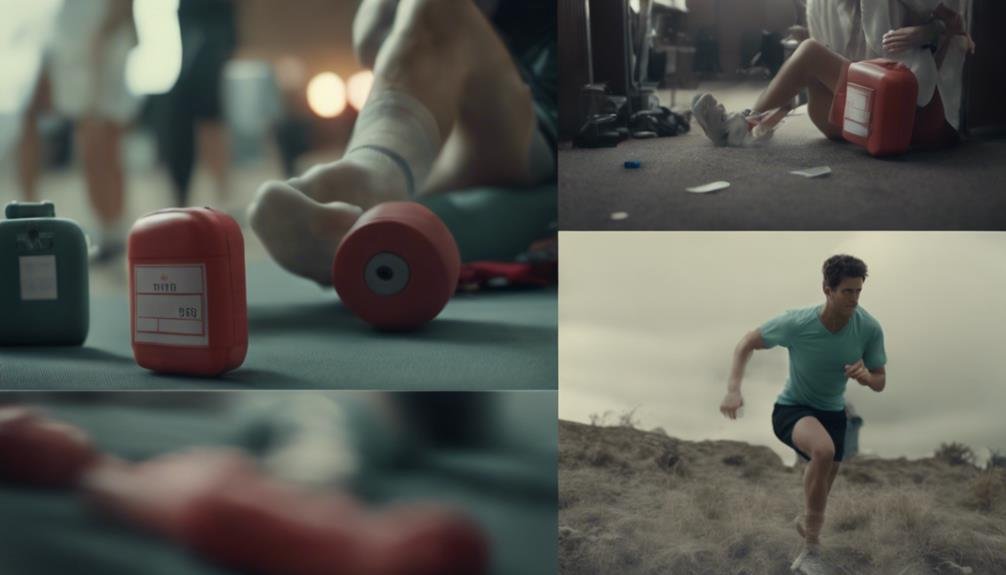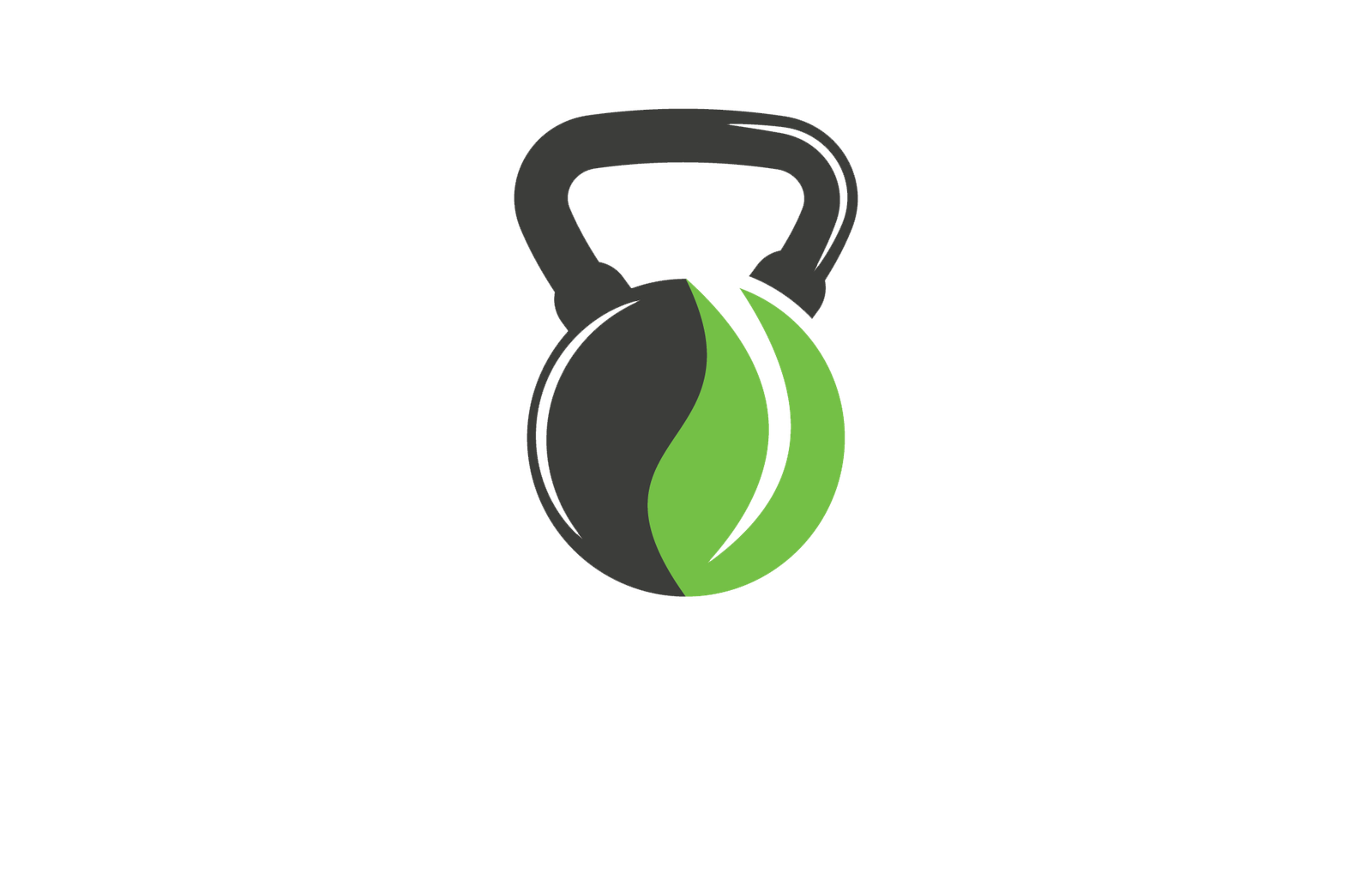Don't miss our holiday offer - 20% OFF!

First Aid for Common Workout Injuries
Cramped muscles, strains, and sprains getting in the way of your fitness goals?
We're aware that exercising regularly is essential for our health, but we're not immune to common workout injuries. Sprains, strains, muscle cramps, and other issues can occur when we push ourselves too hard, too fast. To prevent these setbacks, we need to be proactive, modifying our exercise routines and incorporating low-impact exercises. Recognizing early symptoms of overexertion, such as muscle cramps, dizziness, and fatigue, allows us to reassess and adjust our workout routines to prevent more severe injuries. By understanding the psychology of injury, we can prevent future occurrences – and there's more to learn about treating and preventing common workout injuries, especially if we take a closer look.
Key Takeaways
- For sprains and strains, apply the RICE method: Rest, Ice, Compression, and Elevation to alleviate pain and reduce inflammation.
- Clean and dress wounds promptly to prevent infection, and monitor for signs of infection, such as redness or swelling.
- For muscle cramps and spasms, stop activity, stretch gently, and replenish electrolytes to prevent recurrence.
- Immobilize and stabilize dislocations and fractures, and seek immediate medical attention to prevent further damage.
- Apply gentle pressure to stop bleeding, and use antibiotic ointment and bandages to promote wound healing and prevent infection.
Common Workout Injuries to Watch For
We commonly suffer from at least one of six common workout injuries that can derail our fitness goals, and knowing what to look out for can make all the difference in prompt treatment and recovery. As fitness enthusiasts, we're all prone to pushing ourselves too hard, too fast, and ignoring the warning signs of an impending injury. That's why being proactive is crucial in preventing injuries.
Workout trackers, injury diaries, and fitness apps can be valuable tools in this process. By monitoring our exercise routines, we can identify patterns and potential pitfalls, making adjustments to our regimens as needed. For instance, if we notice we're experiencing persistent shin splints, we can modify our exercise routine to incorporate low-impact exercises, such as cycling or swimming. Additionally, maintaining an injury diary can help us recognize early warning signs of an injury, allowing us to seek medical attention before it's too late. By being proactive and taking preventative measures, we can reduce our risk of injury and stay on track with our fitness goals.
Sprains and Strains: What's the Difference
When it comes to workout injuries, distinguishing between sprains and strains is essential, as both can occur suddenly and seemingly without warning, yet require different treatment approaches to facilitate a successful recovery. We've all been there – in the midst of a great workout, when suddenly a misstep or overexertion leads to a painful sprain or strain. So, what's the difference? A sprain occurs when a ligament is stretched or torn, often due to a sudden twist or fall. On the other hand, a strain happens when a muscle or tendon is overstretched or torn, often due to muscle imbalance or poor form. While both require rest and ice, sprains may benefit from sports massage to promote tissue repair, whereas strains may require targeted exercises for strain rehabilitation. Understanding the psychology of injury can also play a vital role in preventing future occurrences. By taking preventative measures, such as warming up properly and listening to our bodies, we can reduce the risk of sprains and strains, and get back to our fitness routines sooner rather than later.
Dealing With Muscle Cramps and Spasms
During intense physical activity, muscle cramps and spasms can strike unexpectedly, forcing us to halt our workout and attend to the sudden, sharp pain. These sudden contractions can be debilitating, but understanding the underlying causes can help us take preventative measures. Cramp triggers include dehydration, electrolyte imbalance, and overexertion. We're more likely to experience muscle cramps and spasms when we're not acclimated to the exercise or environment.
Electrolyte imbalance, particularly a deficiency in sodium, potassium, or magnesium, can disrupt muscle function, leading to cramps. To prevent these issues, we need to maintain a balanced diet, stay hydrated, and replenish electrolytes during intense workouts. When a muscle cramp or spasm strikes, we should stop the activity and stretch the affected muscle gently. Applying heat or cold packs can also help relax the muscle. In severe cases, we may need to seek medical attention if the cramp persists or is accompanied by other symptoms like numbness or weakness. By recognizing the warning signs and taking preventative measures, we can minimize the impact of muscle cramps and spasms on our workout routine.
Basic Care for Cuts and Lacerations
Cuts and lacerations, whether from accidental scrapes or falls, can quickly put a halt to our workout routine, making it essential that one is familiar with how to provide basic care to promote healing and prevent infection. We've all been there – a slip-up during a sweaty session, and suddenly we're dealing with a nasty gash. But with the right know-how, we can minimize downtime and get back to our fitness goals in no time.
When it comes to basic care for cuts and lacerations, our top priority is preventing wound infection. We do this by cleaning the wound thoroughly with soap and water, and applying antibiotic ointment to reduce the risk of bacterial growth. It's vital to cover the wound with a sterile bandage or dressing to keep it clean and protected. We should also monitor the wound for signs of infection, such as redness, swelling, or increased pain. By following these simple steps, we can promote healing, prevent infection, and get back to our workout routine in no time.
RICE Method for Acute Injuries
We've all experienced the frustration of acute injuries, like sprains and strains, that can sideline us from our fitness routine, which is essential to know how to use the RICE method to alleviate pain and reduce inflammation. This straightforward and effective approach helps to reduce pain, inflammation, and swelling, getting us back on track sooner. RICE stands for Rest, Ice, Compression, and Elevation – a simple yet powerful tool in our first-aid arsenal. When we're dealing with an acute injury, rest is essential to avoid further aggravation. Next, we apply cold therapy, such as an ice pack or cold compress, to reduce inflammation and pain. Compression, via an elastic bandage, helps to constrict blood flow and reduce swelling. Finally, elevation techniques, like propping up the affected limb, reduce blood flow to the area, further alleviating inflammation. By incorporating the RICE method into our first-aid routine, we can quickly and effectively manage acute injuries, getting us back to our fitness routine in no time.
Managing Dislocations and Fractures
At least one in five workout-related injuries involves a dislocation or fracture, requiring immediate attention to prevent further damage. We've all been there – pushing ourselves too hard, and suddenly, we're faced with a painful injury. When it comes to dislocations and fractures, it's essential we understand how to respond.
First, we need to immobilize the affected area to prevent further injury. For dislocations, we should gently splint the joint in its current position, taking care not to push it back into place. For fractures, we should stabilize the affected bone with a splint or sling, keeping it straight and still. We must also monitor for signs of shock, such as dizziness or nausea, and get medical attention ASAP. Fracture prevention is key, so we should always warm up before exercise, stretch afterwards, and listen to our bodies – if we're feeling fatigued or experiencing pain, it's time to take a break. By taking these precautions, we can minimize the risk of bone breaks and get back to our fitness routine sooner.
Blisters and Foot Care Essentials
Nearly 40% of workout-related injuries affect the feet, highlighting the importance of proper foot care and blister prevention. We've all been there – halfway through a run or hike, and suddenly, a pesky blister starts to form. To avoid this, we need to prioritize foot care and blister prevention.
| Blister Prevention Tips | Why It Matters | Our Experience |
|---|---|---|
| Wear moisture-wicking socks | Reduces friction and sweat buildup | Saved our skin on a 10K run! |
| Choose footwear with good arch support | Supports the natural shape of the foot | Made a huge difference on our last hike |
| Apply blister shields or bandages | Protects high-friction areas | A lifesaver on our last marathon training session |
| Trim toenails and keep feet clean | Prevents ingrown toenails and infection | A habit we can't stress enough! |
Overexertion and Heat-Related Illness
As we push ourselves to reach new fitness goals, we're more susceptible to overexertion and heat-related illnesses. We need to know the warning signs to prevent heat stroke, a potentially life-threatening condition. Let's identify the early symptoms and learn how to prevent heat stroke, so we can stay safe and healthy during our workouts.
Recognizing Early Symptoms
We often push ourselves too hard during workouts, ignoring the subtle warnings our bodies send us, which is why recognizing early symptoms of overexertion and heat-related illnesses is essential for preventing more severe consequences. It's vital to tune in to our bodies and acknowledge the subtle signs that indicate we're pushing ourselves too far.
Symptom patterns can vary, but common indicators of overexertion include muscle cramps, dizziness, and fatigue. We might experience headaches, nausea, or a rapid heartbeat, which can be indicative of heat-related illnesses. Injury psychology plays a significant role here, as our mental state can influence our perception of pain and discomfort. If we're not aware of our body's limitations, we may push through the pain, exacerbating the issue. Recognizing these early symptoms allows us to take a step back, reassess, and adjust our workout routine to prevent more severe injuries. By being mindful of our bodies and acknowledging these warning signs, we can avoid more severe consequences and get back to our fitness journey safely.
Preventing Heat Stroke
To prevent heat stroke, we must take proactive measures to avoid overexertion, particularly in hot and humid environments where our bodies are more susceptible to heat-related illnesses. We need to be mindful of our body's signs of distress, such as dizziness, nausea, or headaches, which can indicate an electrolyte imbalance. Monitoring our sweat rate is vital, as excessive sweating can lead to dehydration.
Climate acclimation is key to preventing heat stroke. When we're new to a hot climate, our bodies take time to adapt. We should gradually increase our exercise intensity and duration to allow our bodies to acclimate. Staying hydrated by drinking plenty of water and electrolyte-rich beverages is vital. We should also avoid exercising during the hottest part of the day and take regular breaks in shaded areas.
Back Pain Prevention and Relief
During exercise, we're particularly vulnerable to back pain, which can sideline us for days or even weeks if not properly addressed. However, by taking proactive steps, we can reduce the risk of back pain and alleviate discomfort when it does occur.
One essential strategy is strengthening our cores, which includes our abdominals and back muscles. A strong core provides essential support for our spine, reducing the strain on our backs during exercise. We can achieve this through exercises like planks, bridges, and bird dogs.
Posture adjustments are also vital in preventing back pain. When we slouch or hunch over, we put unnecessary pressure on our spine, leading to discomfort and pain. By maintaining good posture, we can reduce this pressure and alleviate back pain. This includes keeping our shoulders back, engaging our cores, and avoiding heavy bags or weights that can throw us off balance. By incorporating these strategies into our workout routine, we can enjoy a safer and more comfortable exercise experience.
Knee Injuries and Patellofemoral Pain
As we shift our focus to knee injuries and patellofemoral pain, we'll explore the common causes of pain that can bring our workouts to a grinding halt. We'll discuss the key symptoms to watch out for, and what we can do to prevent further strain on our knees. By understanding these essential points, we can take proactive steps to protect our knees and get back to our fitness routines with confidence.
Causes of Pain
Knee injuries and patellofemoral pain often stem from a combination of biomechanical flaws, poor training habits, and inadequate warm-ups, which we commonly overlook in our enthusiasm to push ourselves harder and faster. As a result, we're more likely to experience pain triggers that can sideline us from our fitness routines.
Some common causes of knee injuries and patellofemoral pain include:
- Weak or tight muscles, particularly in the quadriceps, hamstrings, and IT band
- Overpronation or supination, which can put excessive stress on the knee joint
- Poor running or cycling form, which can lead to repetitive stress injuries
- Inadequate footwear or worn-out shoes that fail to provide sufficient support
- Emotional roots, such as stress and anxiety, which can manifest as physical pain
Symptoms to Watch
So, what symptoms should we look out for to catch knee injuries and patellofemoral pain before they sideline us from our fitness routines? As fitness enthusiasts, we need to be aware of the warning signs to prevent minor issues from becoming major problems. Our fitness trackers and injury apps can provide valuable insights, but we must tune into our body awareness and listen to our personal limits.
Crucial body awareness is necessary to prevent injuries from escalating.
Here are some key symptoms to watch out for:
| Symptom | Description | Action |
|---|---|---|
| Pain or stiffness | Dull ache or sharp pain in the knee area | Stop activity, rest, and ice |
| Swelling or bruising | Visible swelling or discoloration around the knee | Seek medical attention |
| Limited mobility | Difficulty bending or straightening the knee | Modify exercises, consult a doctor |
| Clicking or grinding | Unusual sounds or sensations when moving the knee | Consult a doctor or orthopedist |
| Recent trauma | Recent fall, twist, or blow to the knee | Seek immediate medical attention |
Preventing Further Strain
By recognizing the warning signs of knee injuries and patellofemoral pain, we can take proactive steps to prevent further strain and keep our fitness journey on track. Prevention is key, and it starts with a solid foundation of preparation and awareness.
To prevent further strain, we can take the following steps:
- Proper Warm ups: Start with light cardio and dynamic stretching to get our muscles ready for the workout ahead.
- Dynamic Stretching: Focus on leg swings, lunges, and leg raises to loosen up our knees and surrounding muscles.
- Strengthen Our Core: A strong core helps stabilize our knees and reduce the risk of injury.
- Gradual Progression: Avoid sudden changes in our workout routine and gradually increase intensity and duration.
- Listen to Our Bodies: If we experience pain or discomfort, stop and rest – it's better to err on the side of caution than to risk further injury.
Ankle Sprains and Twisted Ankles
We've all been there – in the midst of a vigorous workout, we land awkwardly from a jump or take a misstep, and suddenly we're dealing with a twisted ankle or a full-blown ankle sprain. It's frustrating, painful, and can put a halt to our fitness progress. But don't worry, we've got some tips to help you recover quickly and prevent future ankle woes.
Ankle Care 101
| Symptom | Treatment | Prevention |
|---|---|---|
| Mild Twisted Ankle | Rest, Ice, Compression, Elevation (RICE) | Ankle Strengthening exercises |
| Moderate Ankle Sprain | RICE, Ankle Taping, Stretching | Wear supportive shoes, Improve balance |
| Severe Ankle Sprain | Medical Attention, Immobilization | Ankle Strengthening, Balance training |
| Chronic Ankle Instability | Physical Therapy, Orthotics | Ankle Taping, Core Strengthening |
| Ankle Pain | Stretching, Foam Rolling | Proper Warm-up, Cool-down |
Basic Wound Cleaning and Dressing
When we suffer a workout injury, it's not uncommon for skin to break, leaving us with open wounds that require immediate attention to prevent infection and promote healing. Proper wound cleaning and dressing is vital to facilitate a speedy recovery.
Here's a step-by-step guide to get us started:
- Stop the bleeding: Apply gentle pressure to the wound using a clean cloth or bandage for a few minutes.
- Clean the wound: Rinse the wound with cool or lukewarm water and mild soap. Avoid using harsh soap, hydrogen peroxide, or iodine, as they can slow healing.
- Pat dry: Gently pat the area around the wound dry with a clean towel.
- Apply antibiotic ointment: Apply a thin layer of antibiotic ointment to the wound to reduce the risk of infection.
- Dress the wound: Cover the wound with a sterile bandage or dressing to protect it from dirt and bacteria, promoting wound closure and healing.
Using Pain Relievers Safely
After taking care of our wounds, we need to manage the pain that often accompanies workout injuries, and that's where over-the-counter pain relievers come in – but we must use them safely to avoid unwanted side effects. When it comes to pain relief, we need to find our individual pain threshold, and that means understanding the recommended dosage for our specific injury. It's vital to follow the safe dosage instructions on the label, as taking too much can lead to serious health issues.
We should also be aware of potential interactions with other medications we're taking, and consult our doctor if we're unsure. Additionally, we should avoid mixing pain relievers, as this can increase the risk of adverse reactions. By using pain relievers responsibly, we can effectively manage our discomfort and get back to our fitness routine sooner. Remember, it's always better to err on the side of caution and start with a low dose, gradually increasing as needed. By being mindful of our pain threshold and adhering to safe dosage guidelines, we can alleviate our pain safely and efficiently.
When to Seek Medical Attention
Severe workout injuries require immediate medical attention, and it's essential we recognize the warning signs to avoid delaying treatment and risking further complications. We should never hesitate to seek medical help if we experience any of the following Emergency Symptoms or Medical Red Flags:
- *Difficulty breathing or shortness of breath*
- *Severe pain or numbness that doesn't improve with rest and ice*
- *Open wounds or deep cuts that won't stop bleeding*
- *Swollen or deformed joints that make it hard to move*
- *High fever or chills accompanied by nausea or dizziness*
These warning signs indicate that our injury may be more severe than we think, and we need professional help to avoid long-term damage. Remember, it's always better to err on the side of caution and seek medical attention if we're unsure about the severity of our injury. Don't risk making it worse – get help if you're experiencing any of these symptoms.
Frequently Asked Questions
Can I Use Pain Relievers if I'm Taking Prescription Medications?
We check our prescription medications before taking pain relievers, ensuring we're aware of potential medication interactions, and always follow the safe dosage instructions to avoid adverse reactions.
How Long Should I Wait Before Resuming Exercise After an Injury?
Before resuming exercise, we wait until our injury has fully healed, following a gradual Injury Timeline to guarantee a Safe Return, avoiding setbacks and further damage to our bodies.
Are Compression Sleeves Effective in Preventing Shin Splints?
We've found that compression sleeves can be beneficial in preventing shin splints, providing essential Shin Support. Look for sleeves made from breathable, moisture-wicking Sleeve Materials that offer graduated compression for peak performance.
Can I Use Heat Therapy for Acute Injuries Like Sprains and Strains?
"We typically opt for cold therapy for acute injuries like sprains and strains, as it reduces inflammation. However, heat therapy can be used afterwards to promote healing. We prefer heat wraps for this purpose, as they're gentle and effective."
Do I Need to Get a Tetanus Shot for Every Deep Cut or Laceration?
We typically don't need a tetanus shot for every deep cut or laceration, but we should guarantee proper wound cleaning and follow vaccination schedules to maintain tetanus immunity, reducing the risk of infection.
Conclusion
As we wrap up our fitness journey, we're reminded of the ancient Greek aphorism "know thyself." In the context of workouts, it means knowing our limits and being prepared for the unexpected. We've armed ourselves with the knowledge to tackle common workout injuries, from sprains to cuts, and even the occasional muscle cramp. Now, let's get back out there and crush our fitness goals, armed with the wisdom of first aid and a healthy dose of caution.



